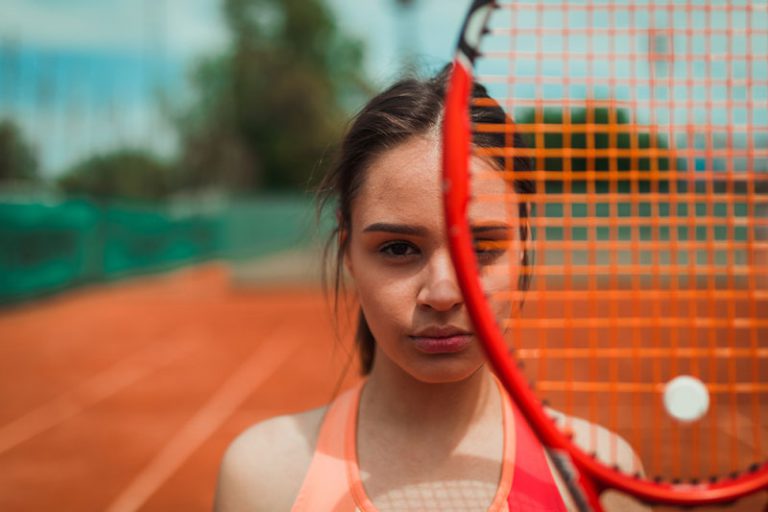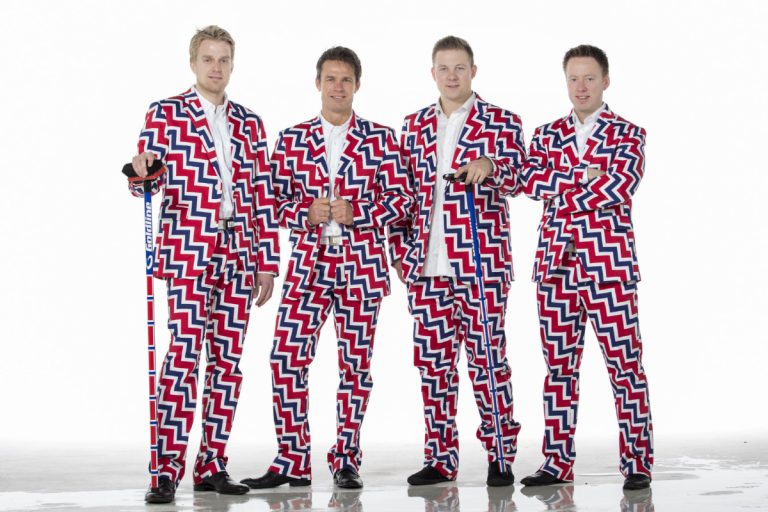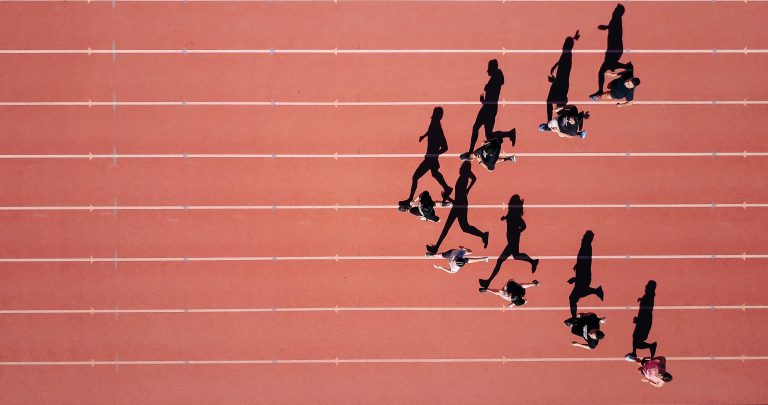
Uniforms maketh the athlete
Heroes don’t wear capes; they wear uniforms… provided they’re comfortable, sustainable and appropriate
As my youngest child finished school recently, I reflected on the symbols of schools, including the uniform (which I will never need to wash and iron again). Despite all of our kids being incredibly different in personalities, interests and talents, they have shared this same uniform and worn it with pride. Once school ends, so too does the sense of belonging embodied by a uniform.
In sport, as well as schools and some professions and trades, uniforms signal a shared culture and purpose, bigger than any individual. Sports guernseys or jerseys are tribal, demarcating the in-group from the out-group, and often spark brand images for places, people and traits. Take the Qld maroon, the Tour Yellow shirt, Manchester united red, All Blacks’ well, black, the Indigenous round guernsey, or green and gold and think of the images that come to mind – stadia, anthems, songs, memories, wins, losses and meaning. The jersey is a key pathway to fandom and participation for young sportspeople, with research suggesting that children are socialised into fandom of particular sports through positive connections with rituals, symbols and experiences, and receipt of a first team jersey can promote strong early attachment to that team and sport.
A Cultural Symbol
Perhaps the All Blacks best epitomise the notion of jersey symbolism in culture building. In The Black Book – a collected wisdom of culture authored by retired All Blacks Sean Fitzpatrick and John Kirwan in 1999 – the authors describe several of their enduring aphorisms that explicitly refer to the jersey, following a slip in performance of the team: ‘Leave the jersey in a better place’; ‘Live for the jersey. Die for the jersey’; ‘Bleed for the jersey’. Even the most compassionate coach and sporting cult figure of all time, Ted Lasso (of the Netflix series of the same name), agrees, through his plethora of messages about team, humility and loyalty, are focused on the Richmond colours. Uniforms provide visible messaging of the collective aiming for a common goal. Without them, sport would consist of individuals aiming for individual goals.
Lucrative Real Estate
The ‘uniform effect’ on team culture and performance is matched by its commercial real estate value for sponsors. Uniform real estate is hotly contested by sponsors of professional sports, providing a strong halo effect for brands aiming to build exposure, brand activations and narrative associated with high performance, leadership and goodwill. Both coaches’ and athletes’ uniforms are lucrative revenue sources for rights holders, and for some, a statement of anti-commercialisation in preserving the guernsey colours from any logos. The access to global or national exposure and new markets through jersey sponsorship is a high price tag. For example, 2021 deals include Emirates’ sponsorship of the Real Madrid kit at an eye-popping $US413 million, and Rakuten’s sponsorship of Barcelona FC at $US325 million. However, uniform sponsorship is controversial, with recent uniform politics centring around potential over-commercialisation of sport through guernsey logo placement, overexposure of harmful product sponsorship for vulnerable consumers, and unplanned activism by teams and athletes in uniform.
A zero emission pathway
Sports brands are under scrutiny for their adverse impact upon the environment, and their uniforms and related merchandise are enormous contributors to greenhouse emissions. The sports apparel industry, including big brands such as Nike, Puma, New Balance and Patagonia, are responding to this social and ethical demand by manufacturing more sustainable materials and sports are aligning with brands which do so. In 2010, Nike announced a ‘Move to Zero’ campaign and for the 2020 Olympics launched sustainable Olympic uniforms and apparel using recycled and circular manufacturing processes, along with low-impact dyes. Sport is responding to the climate change crisis because it affects athletes’ ability to perform in increasingly extreme conditions. The Toronto Raptors launched their 2020–21 uniforms featuring sustainable practices, with each kit comprised of former PET bottles combined with recycled polyester.
A sports-tech bonanza
As well as sustainable uniforms, sport is embracing increasingly high-tech uniforms from junior sports through to elite sports, to track and incentivise performance, prevent injury, accelerate recovery and engage with fans. Sensor-embedded kit uses real-time data to improve technique, monitor, predict and coach athletes. From breathable, heat-resistant fabrics and compression, to inbuilt hardware that connects to apps and wifi technology enabling smart guernseys, socks, sleeves, shoes and wearables, uniforms are now creating those extra ‘seconds and inches’ of sporting performance. The technology is only set to improve, with investment in uniforms and sporting apparel one of the highest growth sectors globally, and the global apparel market expected to reach $US83 billion by the end of 2022.
Sometimes a disaster…
While the high-tech kit may be attractive, there are some uniforms that are etched into our memory for the wrong reasons. Sports uniform disasters have ranged from poor fit and reliability, to just being not too easy on the eye, or even farcical. Who says white lycra is ever a good idea? When aspirational sports embrace it, unfortunately so does the community, as personally witnessed at my local coffee shop each morning.

A showcase for diversity and inclusion
There is a need to ensure that those selected to wear uniforms do so voluntarily. The cases of female athletes opting out or boycotting traditional uniforms in sports such as gymnastics and beach volleyball during the recent Olympics demonstrate the complex cultural layers inherent in uniforms, including their alignment with evolving social standards. The increasing visibility of female athletes with the rise of women’s sport has been accompanied by a dark side to commercialisation, including the continued embeddedness of impractical and often sexualised uniforms, mandated by sports and competitions. Many female athletes are rebelling against outdated and gendered uniforms, as demonstrated by the Norwegian women’s beach handball team, fined $2,393 for wearing “improper clothing” (i.e., shorts), rather than the prescribed bikini bottoms, during the European championships this year. Similarly, German gymnasts donned full bodysuits, opting to punt the traditional skimpy leotards, with support from the German Federation.
There is evidence suggesting that young girls’ participation in sport is directly related to the comfort and appropriateness of uniforms. A study released this year, surveying girls aged 12–16, revealed that girls preferred uniforms that gave them confidence, were made from appropriate materials, had dark-coloured bottoms, fitted them well, weren’t unisex and limited exposure. Ninety percent preferred to wear shorts for school sport. Culturally diverse and LGBTIQ+ athletes also seek a range of uniform options that make them feel confident and comfortable. There are many other recent examples of female athletes protesting sexist and outdated uniform regulations, from the length and cut of bikinis and skirts, and outlawing of shorts. Even merchandise has been accused of being sexist, with the Irish rugby guernseys for fans featuring the male team members for males and models for females. Like some uniforms, the rationale for the regulations is flimsy. Some sports cite the need to make female sport more appealing for audiences and sponsors, or to protect modesty, but it’s really a case of classic sexism and removal of athletes’ agency. The rise of female athletes’ activism in response to policing of uniform regulation is a positive trend and offers some hope for young girls inhibited from participation in sports by uniforms.
There is certainly more to sports uniforms than meets the eye. They are a weapon for performance, sustainability and culture. Uniforms do maketh the athlete.

About the Author
Professor Sarah Kelly, renowned for her global academic, leadership and governance expertise across education and sports management, drives forward-thinking initiatives to the world stage. A distinguished ‘prac-academic’, commercial lawyer and champion for inclusivity, Sarah leads with innovation and insight. For exclusive updates on the latest in sport, management, leadership, education, innovation, and research, subscribe at DrSarahKelly.com.au
